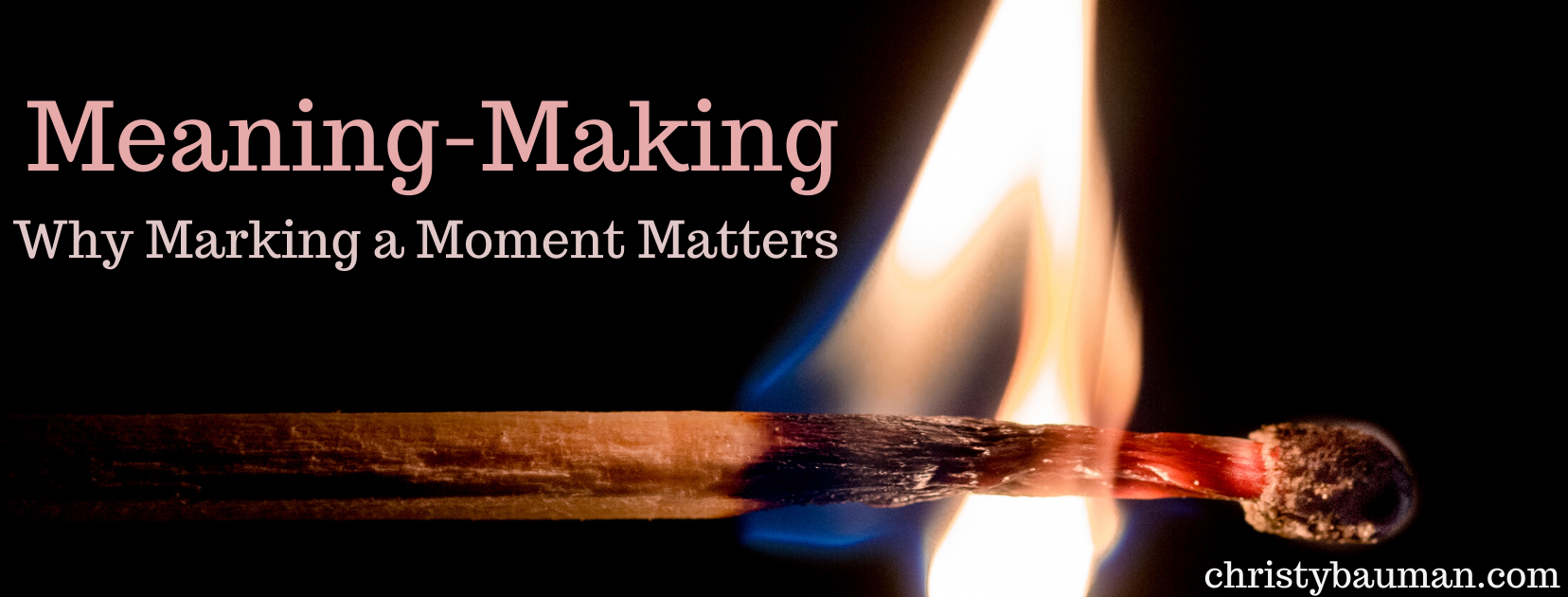
I am restless. My three kids are all quieted and settled for the next hour, and I am well aware this is my only window of time for myself. The barrage of ideas floods my mind: exercise, soak in a bath, watch a show, run an errand, wash clothes, start prepping dinner, go hang out with my partner, finish weeding the garden beds….the list goes on and on. I am acquainted with these moments all too well, and I have trained myself to recognize them and pause.
When I feel restless, I recognize it, stop, take a few breaths and ask myself: What do I need?
What I need most right now in this isolation period of COVID-19 is to get outside whenever possible. I also know that I need to make meaning of the time that is passing by without my active intention. What I am trying to say is that I realize the greatest thing I can do during this outbreak is to isolate my family. By staying home, I help discontinue the spread of this virus and give healthcare workers a chance to catch up. Yet, this feels useless when I so badly want to actively help. Research tells us that making meaning of a situation helps humanize our understanding and psychological health (Park, 2006). My body wants to mark this time somehow, and the next step is to listen to how I might do this. I put my windbreaker and running shoes on, headed for the small wooded path near our house. As I reach for the doorknob to leave, I realize my daughter has my phone and is FaceTiming with her cousin. I feel immediate panic at the thought of leaving the house without my podcasts or audiobooks to bolster an already begrudgingly choice to exercise. There is no time to change my mind, I walk out and face my disappointment head-on.
When being present with one’s self, we often have to push through the disappointment of our comfort-lessness.
The fresh air and hard dirt path seem resistant to welcoming my compartmentalized thoughts – colliding in the infinite space of silence. I heard the words from my conversation with my grandparents yesterday, “If we die, Christy, no one can come to our funeral; the churches are practically shut down”. Their fears feel overwhelming to me, as I think of the thousands within the 70+-year-old demographic who are facing such realities. Community comforts our loneliness and when it’s taken away, we find ourselves faced with a loud silence.
Being alone is often an invitation to mark and make-meaning.
I stop to stretch and feel tightness in my calves and if I stay with my body, I can also sense the aging of my knees. What does it mean to be alone with ourselves? What does it feel like to face our aging bodies? I don’t want to think about my own body aging, I run back to my house, climb onto my trampoline and I jump until I can’t catch my breath. Then, I head to my back fence and pick up my garden clippers and fill the fire pit with dead blackberry bushes. Clearing the land feels good to my cooped-up body. I grab matches, light the brush, and let it burn. As I cut back branches, I can feel the need to stop and mark this unprecedented time.
Marking is done by adding intention and presence to the simple acts we are doing.
I then take a match for my grandparents, I light it and watch it burn – I say a prayer for their fear of a lonely death. I light another match for my friend who I know is miscarrying and can’t go to the hospital, I say a prayer. I light a match for a family member who is scared and alone through this time of isolation. I light another match for all the lives that were taken in the past 24 hours and I say a prayer. I can hear the wind chimes in the background, my Pop gave them to me as a way to make the Holy Spirit audible. I lit a last match for the first responders who are working around the clock to serve the sick, the grocery clerks who are stocking food for our families. Finally, I end my time of intention with a deep breath and a whisper, “In Your mercy, hear my prayer”.
Meaning-making consists of warming up to your body’s experience of a situation, stopping to partake in a physical act of marking, and intentionally ending the time.
As I continue to cut down and burn the brush, I feel my body is more at ease, my mind is not running with unaddressed thoughts, I am not irritated about being without my phone or any other comforts, I feel present and at peace with the situation, I am in, because I have been intentional to walk with the body through the process of making meaning of the unknown.
“Lord, grant me the discipline to be alone with myself,
The fortitude to find you there.
Thank you for this very breath I have,
may I use it honorably today.
Selah.”
Further Research on Meaning-Making and Marking Events
Marker events are commonly displayed in acts of ritual, rites of passage, and ceremonies, such as quinceaneras, bar mitzvahs, and other coming-of-age celebrations, weddings, or funerals. Whether they evoke situational meaning or ceremonial meaning, these acts have an important effect on the level of resilience and well-being in a person’s lifespan (Park & Folkman, 1997; Ungar, 2011). Park and Folkman identify two levels of meaning, global and situational, in the Meaning-Making Model. Situational meaning refers to a person’s understanding of a specific instance, while global meaning refers to an individual’s broad orientation and perspective of multiple situations (Park, 2013). The theory of meaning-making has more recently been used in conjunction with narrative and social constructivist therapies as a way to humanize the assessment process and enhance therapeutic change. Meaning-making is used in case studies, clinical vignettes, and therapeutic dialogue. The integration of meaning-making practices into day-to-day talk therapy sessions has shown positive results, and its application has assisted in closing the g
ap between theory and practice (Neimeyer & Raskin, 2000).
References
Park, C.L. & Folkman, S. (1997). Meaning in the context of stress and coping. Review of General Psychology, 1, 115-144.
Neimeyer, R. A., & Raskin, J. D. (Eds.). (2000). Constructions of disorder: Meaning-making frameworks for psychotherapy. Washington, DC, US: American Psychological Association.
http://dx.doi.org/10.1037/10368-000
Park, C. L., & Ai, A. L. (2006). Meaning-making and growth: New directions for research on survivors of trauma. Journal of Loss and Trauma, 11(5), 389-407.
Park, C. L. (2008). Testing the meaning-making model of coping with loss. Journal of Social and Clinical Psychology, 27(9), 970-994.


